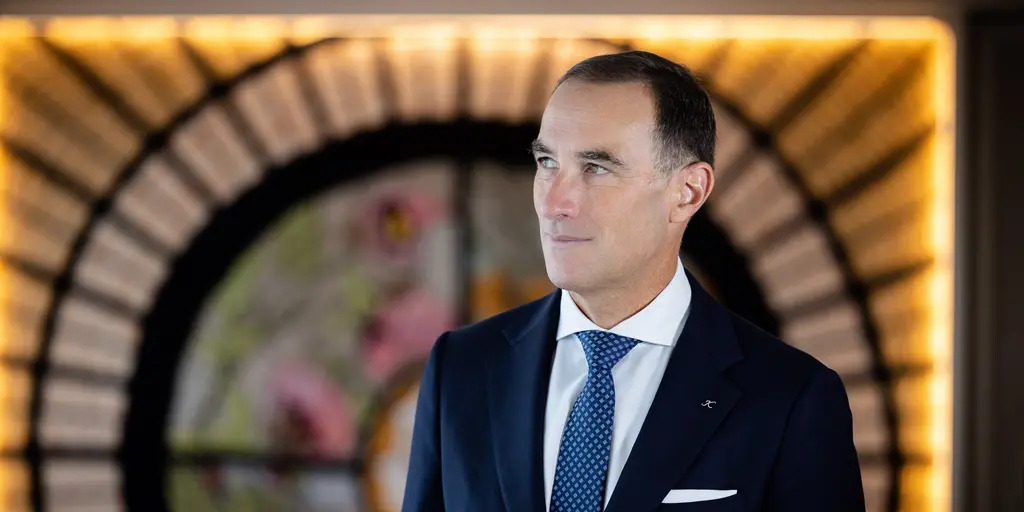Kempinski Hotels has long been synonymous with European luxury.
For over 125 years, the brand has applied a careful, selective approach to growth internationally. They’ve cherry-picked enviable global destinations, rigorously vetted potential partnerships and entrusted power to regional offices in a decentralised approach.
This strategy has helped Kempinski retain the enviable title of the world’s oldest luxury hotel company.
As 2025 draws to a close, Top Hotel News sat down with Christophe Piffaretti, Kempinski’s Chief Development Officer.
From branded residences, sustainability practices, their criteria for suppliers and the challenges of conversion projects – we left no stone unturned.
What does Kempinski’s hotel pipeline currently look like?
We have seen solid growth in recent years with a particular focus on the Middle East, but we have also signed exciting hotels in China, South East Asia, Europe and the Americas.
Today, we have a healthy pipeline of projects signed and under construction, which will generate a wave of openings in 2026-2027.
Our industry has also seen a strong acceleration in the branded residences business and Kempinski, as one of the first players in this field, has benefited from this trend.
Which region is Kempinski particularly focused on growing its footprint in?
We are negotiating new management contracts in all regions, thanks to our global reach to a network of hotel investors, architects, consultants and other industry specialists who help us identify new opportunities.
As a global luxury hospitality brand, we recognise the importance of establishing a strong presence in North America and are working on a plan to get a foothold in the region’s most dynamic markets.
How does sustainability impact Kempinski’s approach when developing additional hotels?
Sustainability is a core value for Kempinski and influences our approach to new hotel development in several key ways. From site selection to design and construction, we prioritise environmental responsibility and aim to minimise our environmental footprint.
We also focus on integrating sustainable practices into the ongoing operations of our hotels, promoting energy efficiency, waste reduction, ethical and responsible sourcing, community involvement and workplace equality. In addition, we work with local communities and stakeholders to ensure that our developments have a positive social and economic impact.
Kempinski is collaborating with EarthCheck to introduce sustainability certifications as a formal recognition awarded to hotels that meet specific criteria for responsible ESG practices. These certifications are designed to guide and verify a hotel’s commitment to sustainability.
By adopting and promoting sustainable practices, Kempinski meets the growing demand from conscious travellers, resulting in long-term operational savings and a positive brand image.
How do you work with suppliers to ensure sustainability best practices?
Kempinski has a Supplier Code of Conduct that outlines the standards and guidelines that all suppliers are expected to adhere to under the three ESG pillars. The Code of Conduct requires suppliers to assess risk by operation, supplier type and geographical area. Suppliers must allow Kempinski, or an independent third party appointed by Kempinski, access to verify compliance with the Code of Conduct.
They must remedy any identified non-compliance within a reasonable period of time or risk termination of their contractual relationship with Kempinski.
In 2023, the first phase of the corporate roll-out of the Supplier Code of Conduct was completed, with 96.4% of Kempinski’s Preferred Vendors either signing our Code of Conduct or having an existing Code of Conduct that meets our criteria.
The Code of Conduct is currently being implemented at hotel level for existing and new suppliers and we aim to achieve 100% coverage by the end of 2025.
What challenges do you see going forward for the global hotel sector?
The advent of AI will certainly help drive efficiencies, but luxury hospitality is and will remain a service industry led by our people.
I expect the sector to continue to grow at a strong pace and this will require us to keep up with the development of the talent base. Competition is fierce and we must continue to work hard to remain the employer of choice.
Do you prefer conversion or new-build sites for hotel projects?
I believe in a healthy balance between conversions and greenfield projects. From a business point of view, conversions largely eliminate the risk of projects not being realised and allow for faster cash flow. On the other hand, new-build projects are valuable because they allow for much more flexibility in planning and creativity in design, allowing us to better realise our vision for the brand.
Kempinski has several residences in the pipeline. What prospects do you see for development in the branded residences sector going forward?
The branded residential market is currently thriving, particularly in hotspots such as Dubai and Miami. However, a slowdown is possible in the future. Developers, investors and brands need to be mindful of market saturation, economic conditions and evolving buyer preferences to ensure the continued success of this model.
Branded residences certainly have their appeal, particularly those associated with luxury hospitality brands such as Kempinski. These brands bring a proven track record of delivering high-quality service, amenities and overall experience. The value proposition is clear: residents gain access to the prestige and lifestyle associated with the brand, as well as tangible benefits such as concierge services, housekeeping and access to hotel facilities.
However, the value proposition becomes less clear to me when I consider branded residences associated with non-hospitality brands such as car manufacturers, jewellers or watch companies. While these brands may have a strong reputation in their respective fields, their expertise doesn’t necessarily translate to the residential sector.
What are your main criteria when considering acquisitions and creating partnerships?
As a luxury hotel brand, we take a rigorous and multi-faceted approach to evaluating potential acquisitions and partnerships. The key is to find opportunities that strengthen the brand, are profitable for our owners, create value for guests and drive sustainable growth in the highly competitive luxury hospitality market.
Does your role encompass examining supplier partnerships, and if so, how are you looking to develop those?
Our role is to examine the current supplier partnerships for vendors that are generally used globally by hotels in their supply chain. As mentioned earlier, any new vendor which starts working with any of our hotels needs to sign the Kempinski Supplier Code of Conduct, and the hotels are gradually implementing the Supplier Code of Conduct with all existing vendors.
The second natural step which would start in 2025 is to ascertain that the vendors are signed with any globally recognised assessment platforms that rate businesses’ sustainability based on the four major key categories as environmental impact, labor and human rights standards, ethics and procurement practices.
We already started having discussions with some of these platforms to see how best to implement such practices. In this case we would need to allow the vendors to align themselves as we know that such assessments are quite thorough and do take some time.
We have embarked on this journey to ensure that we only work with partners who have the same sustainability minded approach.





